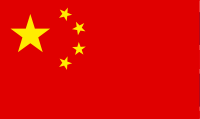Welding suitability of aluminium
Aluminium and aluminium alloys can be joined in all combinations by resistance spot welding. However, this may require preparations such as surface pre-treatments. The suitability for spot welding is significantly influenced by the chemical composition, the metallurgical properties and the surface condition. It is also important to note the very good conductivity due to the chemical composition, which leads to much higher welding currents than when using steel sheets.
This is due to the fact that the welding time must be very short because of the good conductivity mentioned above. To apply the necessary energy, this requires the high welding current. This required welding current is about three to four times greater than for comparable steel materials and sheet thicknesses. This means that the operating power of the welding machine or welding gun and the mains connection power are also correspondingly greater. For this reason, almost exclusively DC systems from medium-frequency systems or three-phase DC machines are used for spot welding of aluminium.
For spot welding with guns, current sources with inverters and corresponding medium-frequency transformers are used for welding currents above 60 kA. The latest developments in aluminium spot welding have led to inverter systems with special control and monitoring modes for welding aluminium sheets. In addition to the electrical variables, the force is also measured and influenced. As described in various articles in the last issues of Schweißzeit, there are also other trends towards the use of KE power sources for spot welding of aluminium in addition to these inverter solutions, which are also already being used in practice.


